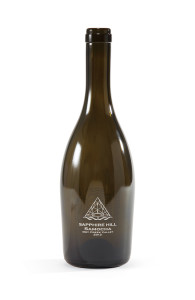Wine, more than maybe any other after-hours drink, is about the experience. From a customer’s perspective that experience often starts in a winery or the grocers as they’re curving their way through aisles of stacked bottles.
You want a design that stands out from the pack and leaves an indelible impression on your customers’ minds moments before checkout. Your bottle, simply put, immediately works to attract customers or repel them away from another winery’s lineup.

Straightforwardly getting your message across on the bottle itself – a.k.a., direct, screen printing – lets your customers know that they’re in store for a quality experience.
That’s because screen printing puts your branding image, undiluted, right on the bottle using premium organic inks, carefully laid out and cured at high temperatures for a lasting finish.
If your bottle design is straight down the center and you’re not looking for anything extravagant, then a paper label might be good enough. Paper labels, though, can crinkle under high humidity, or get jounced around and damaged during the transportation process.
This might sound like a niggling technicality, but protecting against high humidity is a serious concern when you’re dealing with cellars and wine storage. A paper label that’s fraying and basically in disarray when you (or a customer) go to uncork, absolutely detracts from the experience – and might even embarrass a host or two.
Screen printing, on the other hand, can accommodate multiple “labels” anywhere on the bottle and you don’t need to worry about humidity or adhesives. Direct, screen printing has another advantage – if some of your offerings come in non-standard bottle types, then direct printing can still go right on the bottle.
With approximately 8,000 wine brands operating today in the US – by a conservative estimate – and extremely fierce competition in the Sonoma Valley region, and the fact that paper label stock has remained standardized for decades, it’s time for a change.
Most customers meandering through the wine aisle are looking for something that catches their attention. A bottle that features high-quality ceramic screen printing definitely provides a break from the monotony of the drab paper labels adorning most wine bottles.
Recent estimates also show that only about one percent of wineries have been early adopters of screen printing. This is just another way of saying that wineries that beat the competition to the punch stand to reap more of the advantages.
For better or worse our economy now works mainly based on a winner-take-all system in which the early adopters reap a disproportionate amount of the rewards.
The good news for wineries, is that the barriers for this winner-take-all market have been all but eroded for wineries willing to move away from the tradition of paper labels, and iconoclastic-ally adopt screen printing early.
There’s an enormous value proposition, or customer appeal, in adding glossy, direct prints to your current lineup of wines – even for modestly sized wineries.
Advances in digital printing have, moreover, made direct bottle printers more willing to take on smaller runs of bottles since the printers themselves are far less worried about losing revenue on orders that aren’t absolutely Herculean.
This, of course, benefits small wineries and livens up the competition in the wine aisle by putting small wineries essentially on equal footing with established ones.
Coupled with that, when you consider that the average wine consumer goes into the store open-minded and willing to be enticed by the most interesting bottle present, screen printing becomes a game changer. So if you need your wine bottles packaged by a professional then reach out to us .